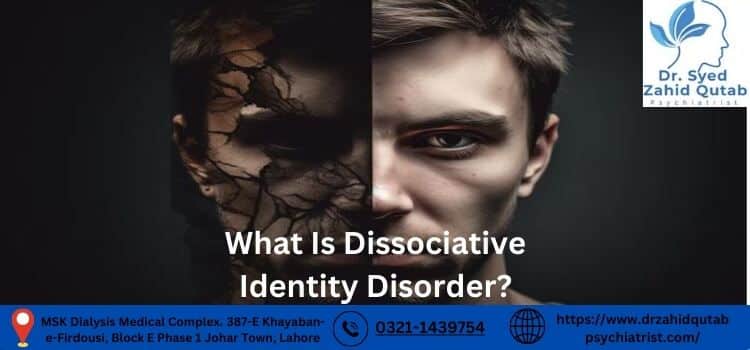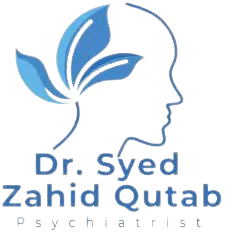Are you a mental health patient? Explore What Is Dissociative Identity Disorder? Dissociative Identity Disorder (DID) is a complex mental health condition that is characterized by the presence of multiple distinct identities within an individual. It was previously known as Multiple Personality Disorder and has been subject to much controversy and misunderstanding in the past.
In this comprehensive guide, we will explore what DID is, its symptoms, possible causes, diagnosis, and treatment options available.
Let’s dive in.
What Is Dissociative Identity Disorder?

Dissociative Identity Disorder (DID) is a mental health condition that falls under the category of dissociative disorders in the Diagnostic and Statistical Manual of Mental Disorders (DSM-5). It is a complex and often misunderstood condition, with individuals experiencing disruptions in memory, identity, emotion, perception, behavior, and sense of self.
DID occurs when an individual experiences severe trauma or abuse during childhood. The mind creates separate identities as a coping mechanism to deal with the overwhelming emotions and memories associated with the trauma.
Symptoms of Dissociative Identity Disorder
The primary symptom of DID is the presence of two or more distinct identities, also known as alters, within one individual. These identities have their own unique way of perceiving and interacting with the world.
Other common symptoms include:
- Gaps in memory
- Feeling detached from oneself or surroundings
- Difficulty maintaining relationships
- Flashbacks to traumatic events
- Depersonalization or feeling like an outsider to one’s own body and thoughts
- Dissociative amnesia, is where an individual cannot remember important personal information
Possible Causes of Dissociative Identity Disorder
The exact cause of DID is still unknown, but it is believed that severe emotional, physical, or sexual abuse during childhood can trigger the development of alters as a coping mechanism. Genetics, brain structure, and cultural factors may also play a role.
Genetics: Some research suggests that individuals with a family history of dissociative disorders may be more prone to developing DID.
Brain Structure: Studies have shown that individuals with DID have structural and functional differences in brain regions responsible for identity, memory, and emotion regulation.
Cultural Factors: Cultural beliefs about the self and dissociation can also influence the development and expression of DID symptoms.
Diagnosis of Dissociative Identity Disorder
DID is a complex condition that can be challenging to diagnose. It often co-occurs with other mental health disorders, such as depression, anxiety, and post-traumatic stress disorder (PTSD). A thorough evaluation by a mental health professional is necessary for an accurate diagnosis.
The DSM-5 outlines the following criteria for the diagnosis of DID:
- The presence of two or more distinct identities
- Gaps in memory that cannot be explained by ordinary forgetfulness
- Significant impairment in daily functioning
- Symptoms not due to substance abuse or other medical conditions
Treatment for Dissociative Identity Disorder
Treatment for DID involves a combination of therapy, medication, and a supportive environment. The goal is to integrate the alters and create a sense of cohesion and stability within the individual.
Therapy: The primary form of treatment for DID is psychotherapy, specifically trauma-focused therapy, which helps individuals process their traumatic experiences and develop coping skills to manage dissociative symptoms. Other forms of therapy may also be used, such as cognitive-behavioral therapy (CBT), dialectical behavior therapy (DBT), and eye movement desensitization and reprocessing (EMDR).
Medication: Medications may be prescribed to manage specific symptoms of DID, such as depression, anxiety, or dissociative amnesia. However, there is no medication specifically for the treatment of DID.
Supportive Environment: Having a supportive and understanding environment can make a significant difference in the recovery of individuals with DID. This can include loved ones, support groups, and other resources within the community.
Conclusion
Many people have question What Is Dissociative Identity Disorder? Dissociative Identity Disorder is a complex and often misunderstood mental health condition that requires proper diagnosis and treatment by trained professionals. With the right support and therapy, individuals with DID can learn to manage their symptoms and live fulfilling lives.
If you or someone you know may be experiencing symptoms of DID, seeking help from a mental health professional is the first step towards recovery. Remember, you are not alone in this journey.
FAQs
Frequently asked questions by people are mentioned below:
What is a simple explanation of dissociative identity disorder?
Dissociative Identity Disorder (DID) is a mental health condition where an individual has multiple distinct identities within themselves. These identities have their own unique way of perceiving and interacting with the world.
What is dissociative identity disorder characterized as?
Dissociative Identity Disorder (DID) is characterized as a dissociative disorder, meaning it involves disruptions in memory, identity, emotion, perception, behavior, and sense of self. It is also often co-occurring with other mental health disorders such as depression and anxiety.
How does the DSM-5 define dissociative identity disorder?
The DSM-5 defines Dissociative Identity Disorder (DID) as the presence of two or more distinct identities within one individual, along with gaps in memory that cannot be explained by ordinary forgetfulness.
How do doctors diagnose DID?
Doctors diagnose Dissociative Identity Disorder (DID) through a thorough evaluation of symptoms and experiences, as well as ruling out other possible explanations. This may include interviews, questionnaires, and medical tests.
